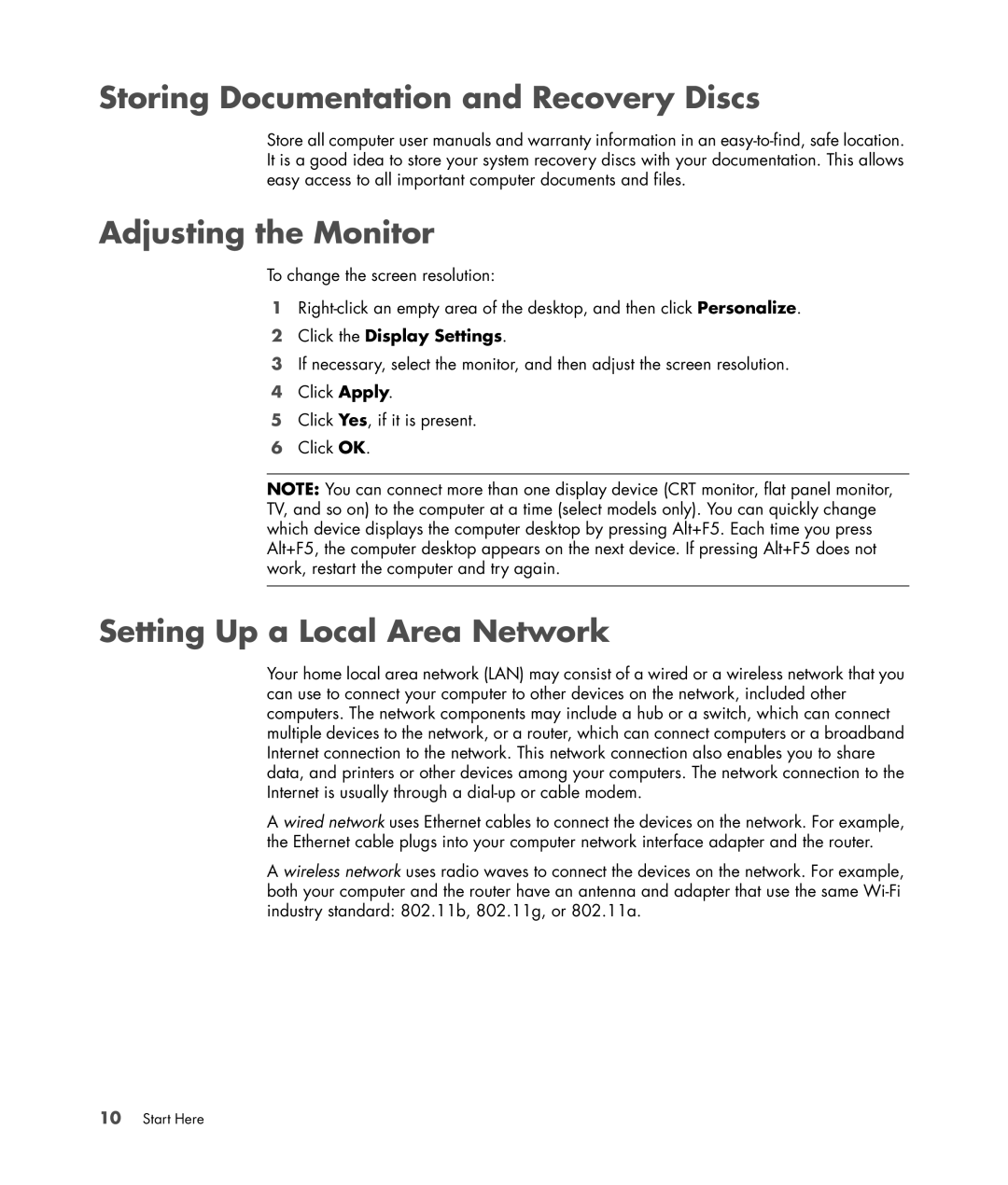
Storing Documentation and Recovery Discs
Store all computer user manuals and warranty information in an
Adjusting the Monitor
To change the screen resolution:
1
2Click the Display Settings.
3If necessary, select the monitor, and then adjust the screen resolution.
4Click Apply.
5Click Yes, if it is present.
6Click OK.
NOTE: You can connect more than one display device (CRT monitor, flat panel monitor, TV, and so on) to the computer at a time (select models only). You can quickly change which device displays the computer desktop by pressing Alt+F5. Each time you press Alt+F5, the computer desktop appears on the next device. If pressing Alt+F5 does not work, restart the computer and try again.
Setting Up a Local Area Network
Your home local area network (LAN) may consist of a wired or a wireless network that you can use to connect your computer to other devices on the network, included other computers. The network components may include a hub or a switch, which can connect multiple devices to the network, or a router, which can connect computers or a broadband Internet connection to the network. This network connection also enables you to share data, and printers or other devices among your computers. The network connection to the Internet is usually through a
A wired network uses Ethernet cables to connect the devices on the network. For example, the Ethernet cable plugs into your computer network interface adapter and the router.
A wireless network uses radio waves to connect the devices on the network. For example, both your computer and the router have an antenna and adapter that use the same
10Start Here
